Navigating Data Science Job Titles: Data Analyst vs. Data Scientist vs. Data Engineer
No, they’re not the same jobs! Learn what responsibilities, skills, and tools used make them different. Then, choose the right career path for you.
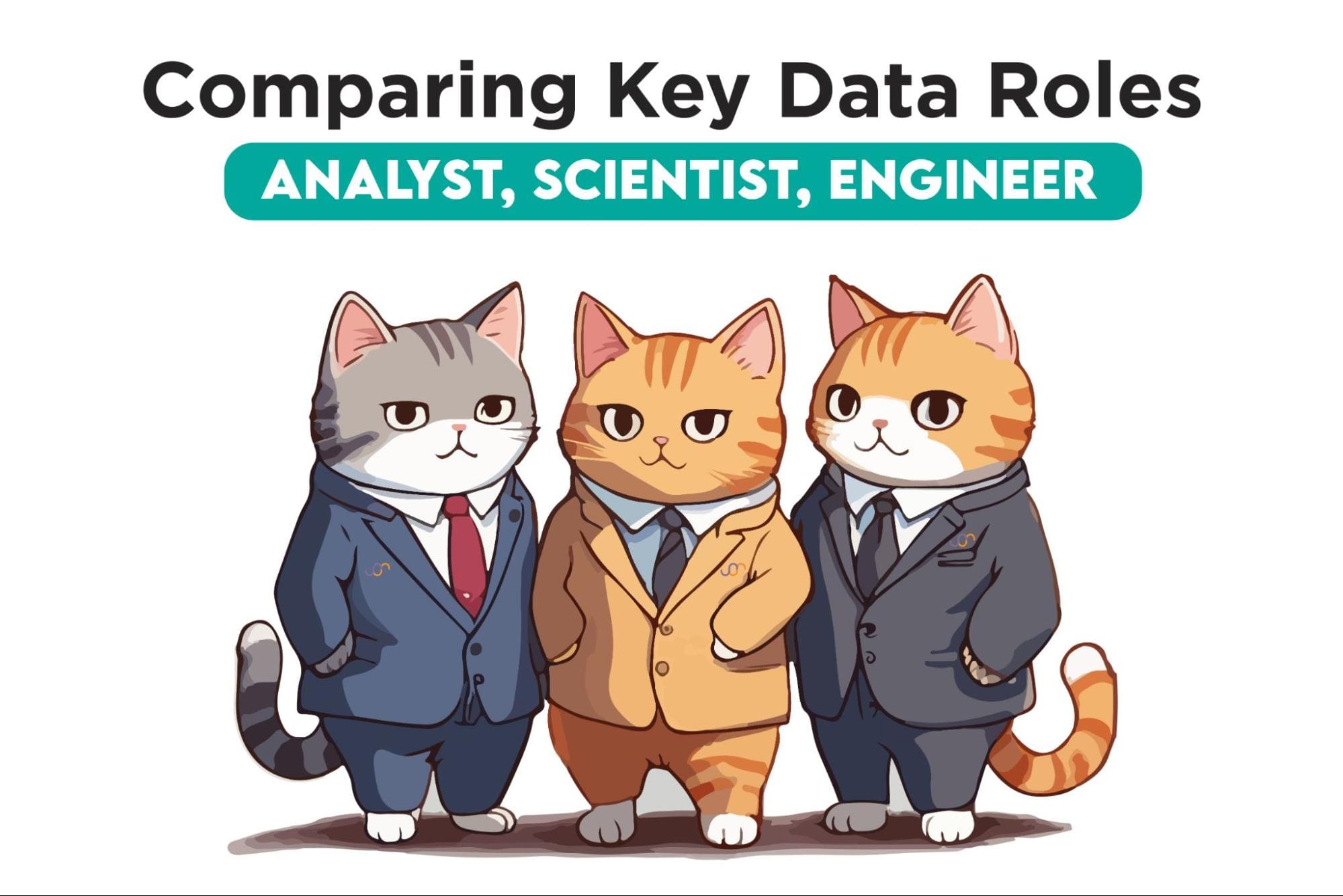
Navigating seems like the right choice of words. Data science can sometimes seem like a wild sea that washes up a new job title or specialization every few minutes. Thanks a lot, data science. We appreciate you being dynamic and wild, but what do we do with it?
Let’s first get the basics straight. When I say data science jobs, I mean data science in a broader sense that includes all the data jobs. For me, all these are data science job titles.
Second, data analysts, data scientists, and data engineers are not new jobs anymore. But they still do cause some confusion about who does what. There is some slight overlap between jobs, which doesn’t help.
Many companies make it even worse when having a one-person data team. Yes, startups, I’m looking at you!
No, data analyst, data scientist, and data engineer are not the same job! Who would have thought?
While these jobs have different areas of expertise and focus, they all work towards the same goal as part of data teams within a company.
Why Data Roles Are Crucial
Every company sees value in data and uses a data team to extract it. Generally, there are five common goals most companies try to achieve with that.
1. Informed Decision-Making
The data allowed companies to stop tapping in the dark and relying on the decision-makers' business hunch (read: luck). With the technological advancements, the variety of data and the possibilities of its use increased.
Data science takes data to provide insights that inform strategies and executive decisions.
2. Improving Customer Experience
Companies have to be customer-oriented because that’s where their money is coming from. Data science allows companies to analyze customer behavior and feedback. This enables businesses to tailor their products and services to customers and predict their needs.
3. Operational Efficiency
While they like to earn as much as possible from their customers, businesses also like to do it in the most efficient way. Read: at the lowest cost possible. Data science helps with that. It can automate and speed up tasks, optimize them, and discover bottlenecks. In short, deal with the cost side of the business.
4. Innovation and Competitiveness
Data science drives innovation by identifying and predicting customer needs, trends within the industry, changes in the economy, and so on. The innovation here can refer to the existing or new products, marketing and selling strategies, and manufacturing processes, but it’s not limited to that.
5. Risk Management
Business is a risky, ahem, business. Data science helps identify, assess, and manage potential risks for the company.
Data Science Job Titles
We can’t analyze the differences between the job titles unless we have clear definitions of each. Let’s start from that. Then, we’ll move to their responsibilities, skills, tools used, and career paths.
Data Analyst
Role summary: Data analysts, rather obviously, analyze data. They do it to identify patterns and come up with actionable insights. These patterns and insights are presented in the reports and dashboards, enabling decision-makers to make informed decisions.
Data analysts are mostly tasked with descriptive (What happened?) and diagnostic (Why it happened?) data analysis.
Key responsibilities:
- Data Cleaning: Making data ready for analysis by standardizing it, changing its format, and dealing with duplicates, missing values, and data inconsistencies.
- Data Analysis: Using statistical methods to understand trends, patterns, and insights in data.
- Data Visualization and Reporting: Communicating data analysis findings through reports, data visualizations, and dashboards.
Key skills and tools: The main skills and tools used can be derived from the role description.
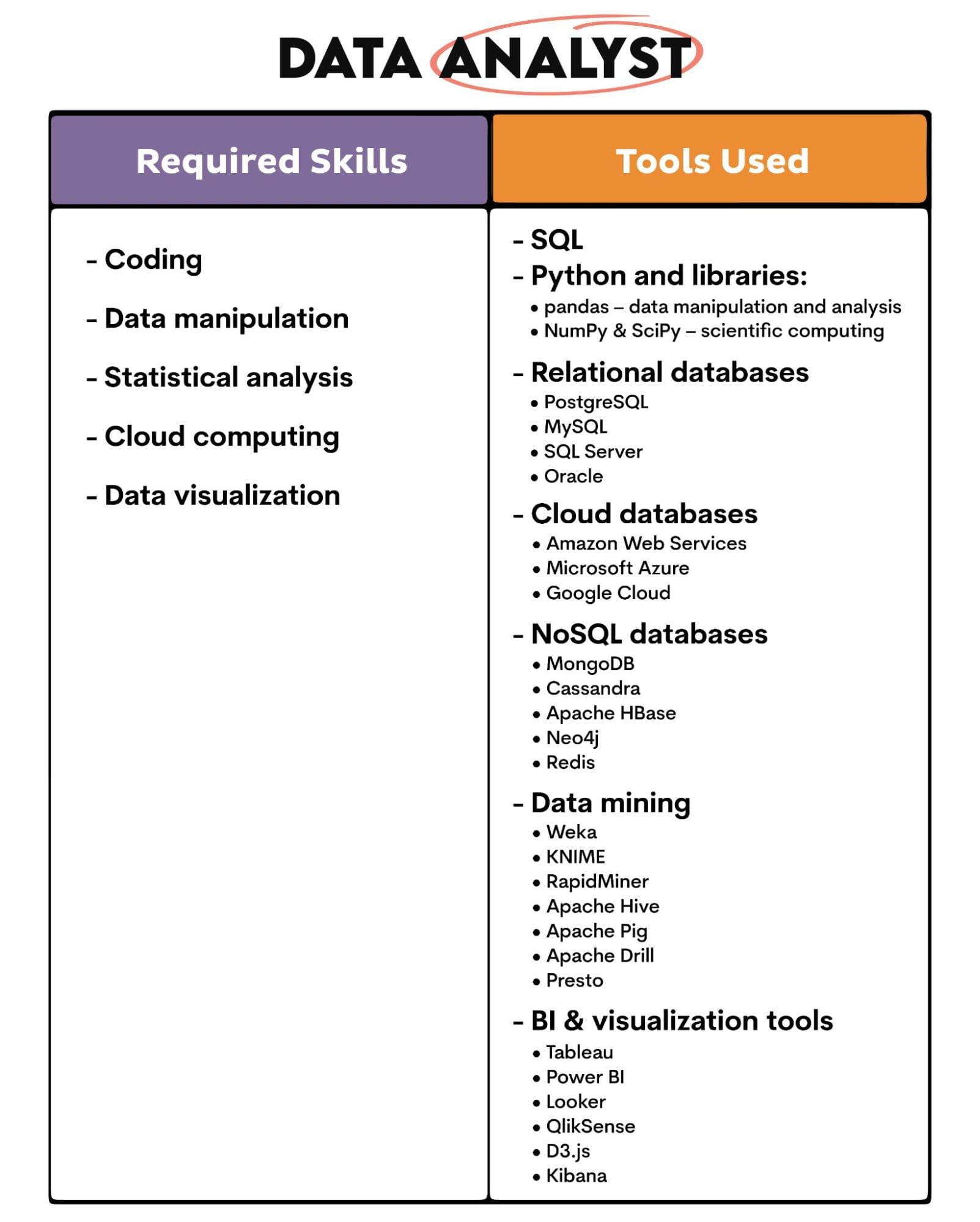
Career path: Data analysts can move to more senior analyst roles. With more experience and additional education, they can transition into specialist roles, such as statistician, business analyst, or even data scientist.
Data Scientist
Role Summary: Data scientists also analyze data but on a more advanced level. They use statistical models and machine learning algorithms to determine the likelihood of future events. This tells us they are, unlike data analysts, concerned with predictive (What will happen?) and prescriptive (What should be done?) data analysis.
Key responsibilities:
- Advanced Analytics: Using advanced statistical techniques to extract insights from data.
- Machine Learning: Implementing machine learning algorithms to learn from the existing data.
- Predictive Modeling: Building and deploying models to predict future events on the actual and new data.
These key responsibilities are built on the same work that data analysts do. Data scientists also can’t do without data cleaning and data visualization.
Key skills and tools: Here are the skills and tools required to be a data scientist. You’ll see there’s some overlap with data analysts.
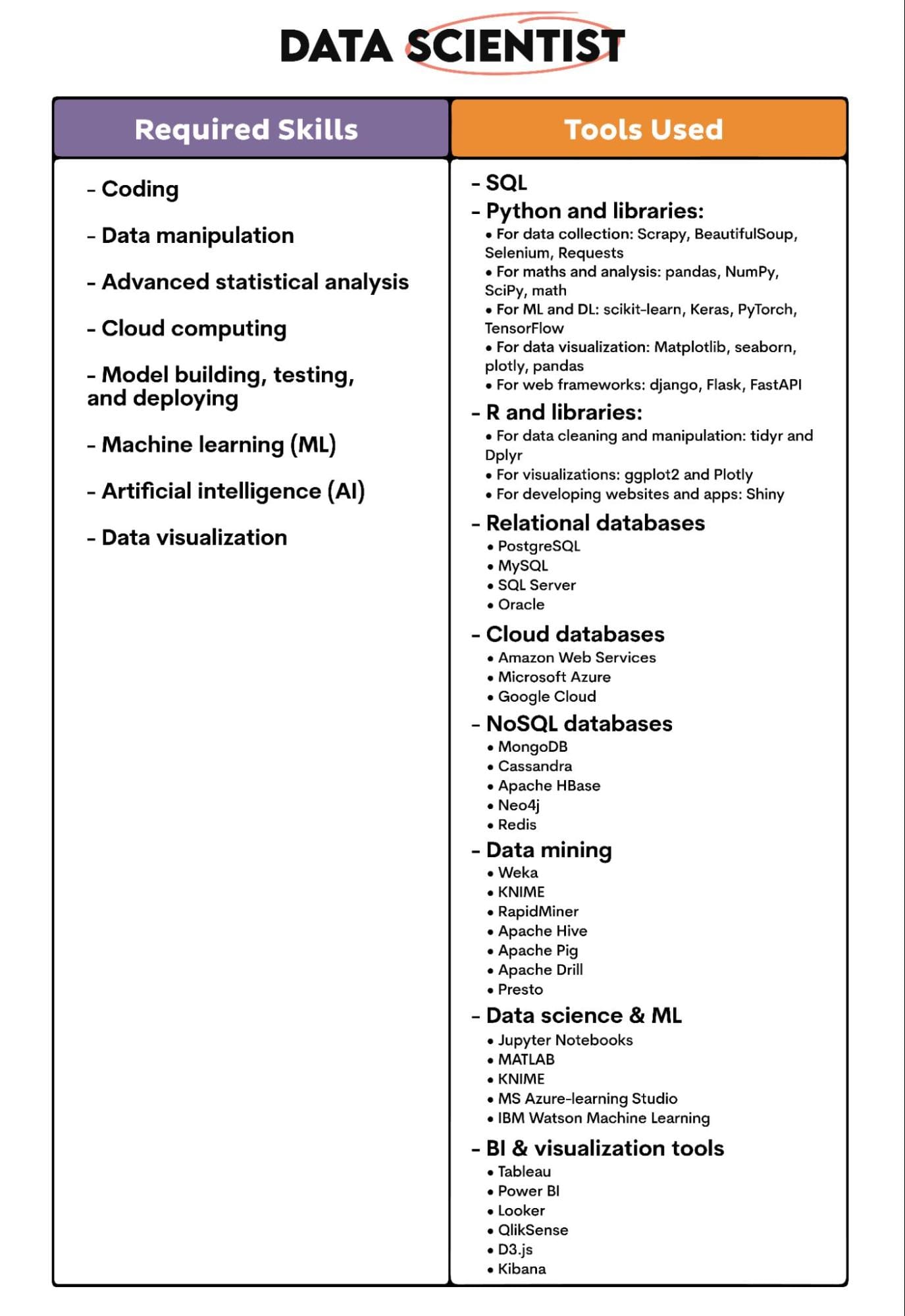
Career path: Data scientists start as junior data scientists and can move on to senior data scientists, sead data scientist and director of data science. They can also move in other directions, such as becoming AI specialists, machine learning engineers, or computer & information research scientists.
Data Engineer
Role summary: Data engineers are building data systems with the purpose of collecting, storing, and transporting data. They ensure the data availability, quality, and analyzability (Is that a word?) for all the data users.
Key responsibilities:
- Data Architecture: Building data systems based on the design envisaged by data architects.
- Data Pipeline: Building the system that enables data to run from multiple data sources to databases, data warehouses, and data lakes and being ready for use by other data users.
- Ensuring Data Quality: Identifying errors and inconsistencies in data, removing them, and improving data accuracy and reliability.
Yes, data engineers are focused on these tasks. But they, too, can’t avoid data cleaning and data visualization.
Key skills and tools: Here are data engineers’ skills and tools used.
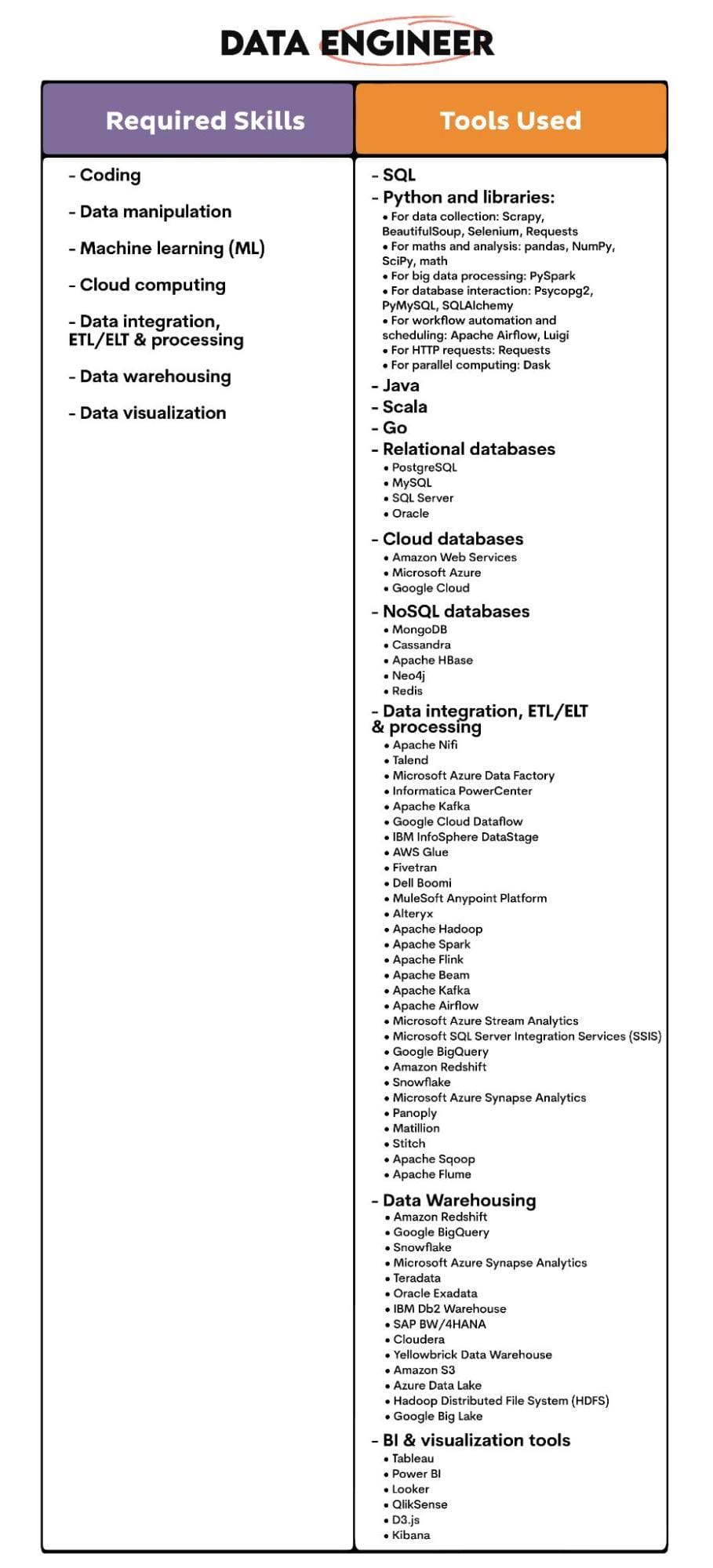
Career path: Data engineers’ careers can progress to senior data engineers or data architects. They can also specialize in areas such as big data, machine learning, or business intelligence.
The Venn Diagrams of Data Analysts, Data Scientists, and Data Engineers
We’ve seen the differences between the three jobs. Along the way, we also noticed some overlap between the jobs in terms of the required skills.
For a quick-glance understanding, these can be shown using the Venn diagrams.
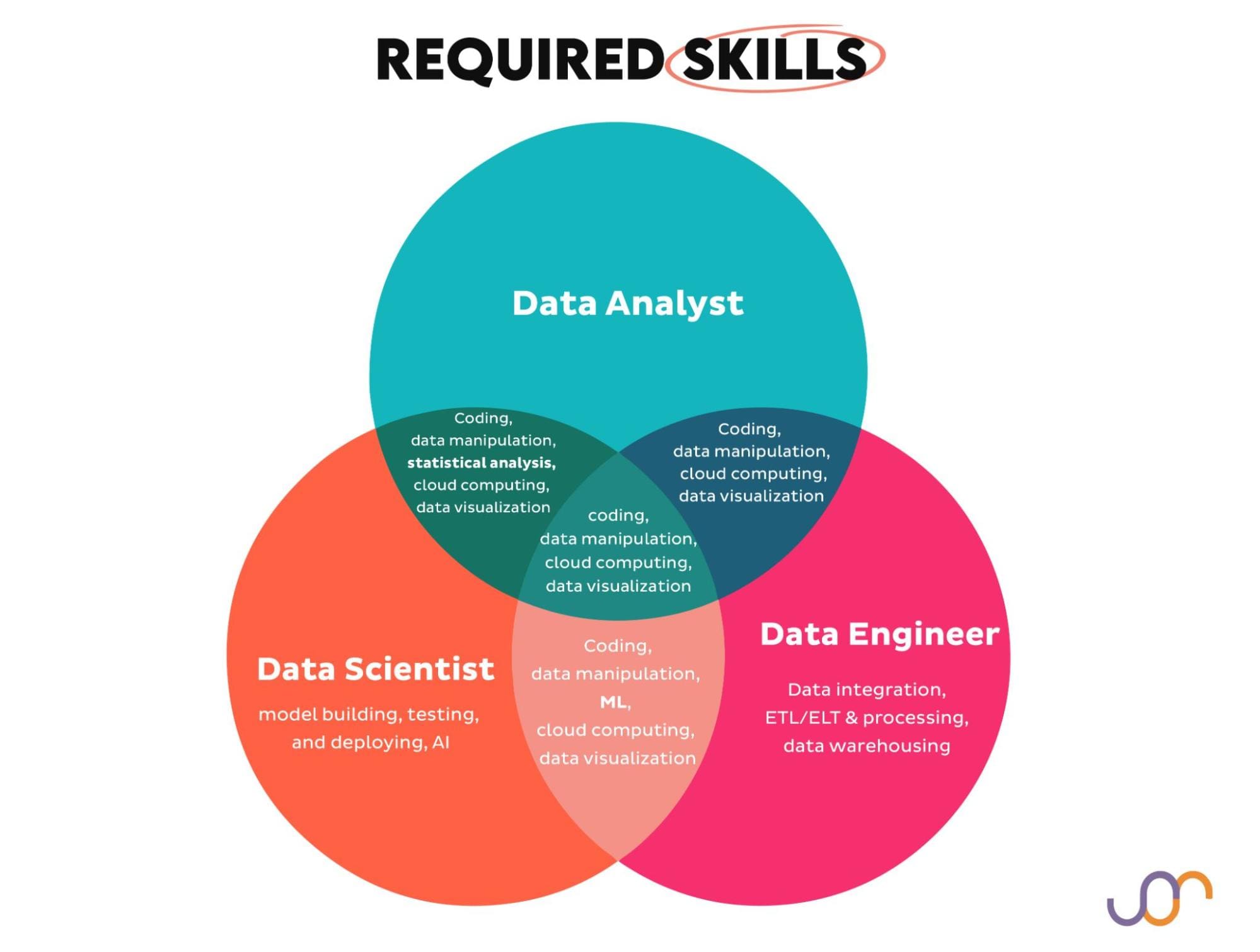
You can see that the skills shared by all three jobs are:
- Coding
- Data manipulation
- Cloud computing
- Data visualization
The additional skills shared between two jobs on top of that are highlighted.
Data analysts don’t have any skills that are uniquely theirs; other jobs also need these skills to a certain extent.
Skills unique to data scientists are:
- Model building, testing, and deploying
- AI
Skills special to data engineers are:
- Data integration, ETL/ELT & processing
- Data warehousing
Let’s now use the same visualization to show the tools used in these jobs.
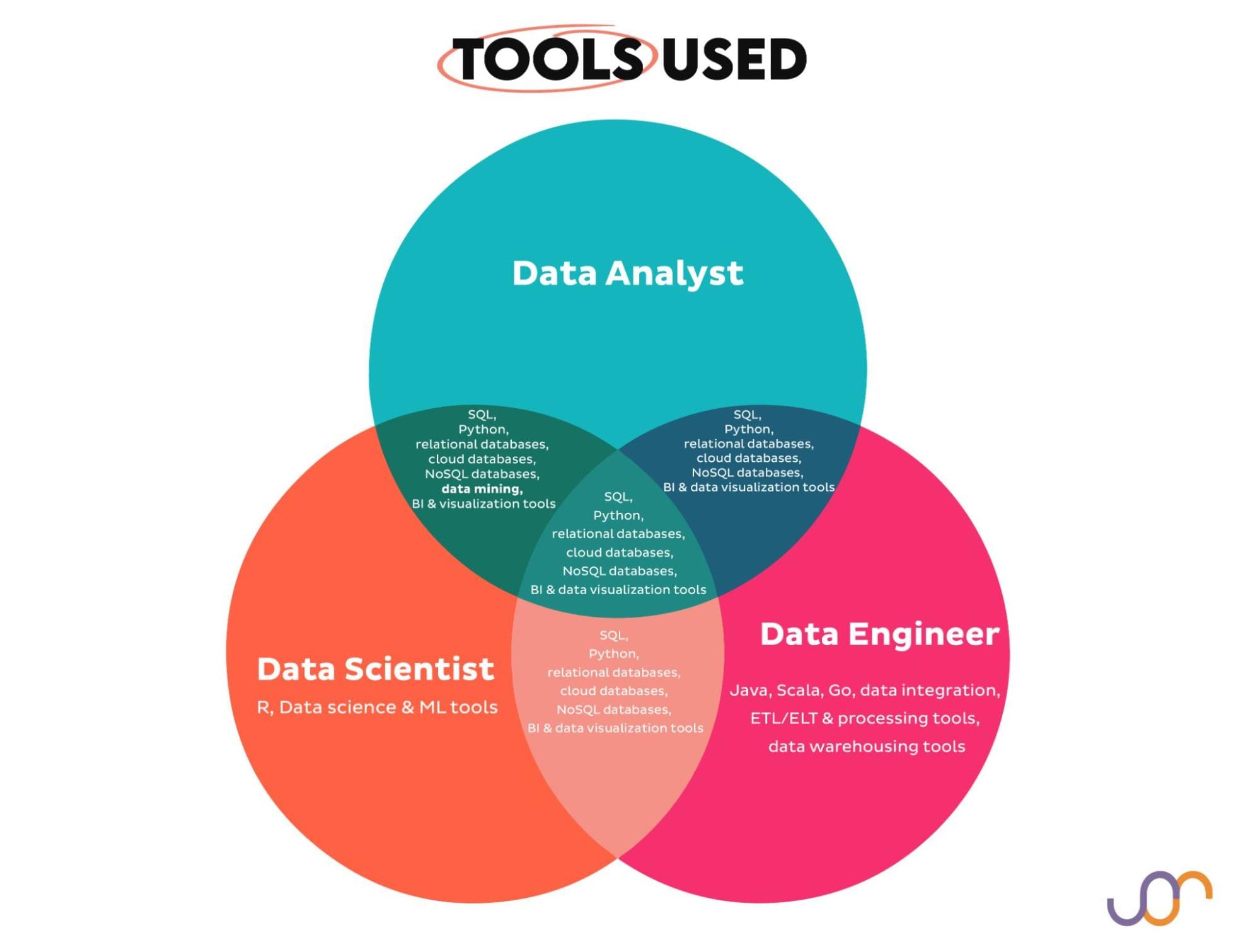
The image shows that all three jobs share these tools:
- SQL
- Python
- Relational databases
- Cloud databases
- NoSQL databases
- BI & data visualization tools
The additional tools shared between two jobs on top of that are highlighted.
The tool types used by data analysts are used by at least one other job. While the jobs might share the same tool types, the tools might be used to a different extent, or the exact tools within a category might be different.
Tools unique to data scientists are:
- R
- Data science & ML tools
Tools unique to data engineers are:
- Java
- Scala
- Go
- Data integration, ETL/ELT & processing tools
- Data warehousing tools
Bridging the Gaps: Collaboration is Key
We saw that each role has distinct responsibilities and tools they use. There are also some overlaps between all three jobs. This shows these jobs are not entirely different worlds, and collaboration between data analysts, data scientists, and data engineers in a data team is crucial.
Both data analysts and data scientists rely on the infrastructure and clean, organized data of high quality. On the other hand, data engineers must collaborate with data analysts and data scientists – as they are data users – when building data architecture and providing data.
Data scientists often have to collaborate with data analysts to understand business contexts better.
Conclusion: Choosing Your Path
The differences and similarities between data analysts, data scientists, and data engineers should be much clearer now.
In conclusion,
- If deriving insights from data and communicating them is your thing, data analysis might be your path.
- If building predictive models and using machine learning algorithms gets your juices flowing, consider data science.
- If you feel that building data architecture and ensuring a regular data flow will make you happy, then data engineering might be the right choice.
If you want to learn more, here are more details about the differences between data engineers and data scientists, and also between data analysts and data scientists.
Nate Rosidi is a data scientist and in product strategy. He's also an adjunct professor teaching analytics, and is the founder of StrataScratch, a platform helping data scientists prepare for their interviews with real interview questions from top companies. Nate writes on the latest trends in the career market, gives interview advice, shares data science projects, and covers everything SQL.
